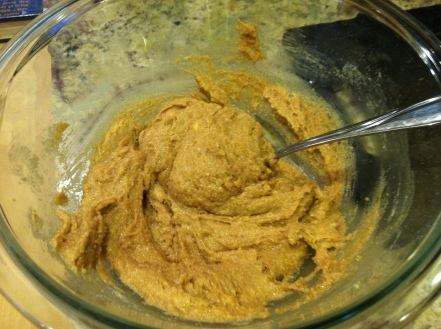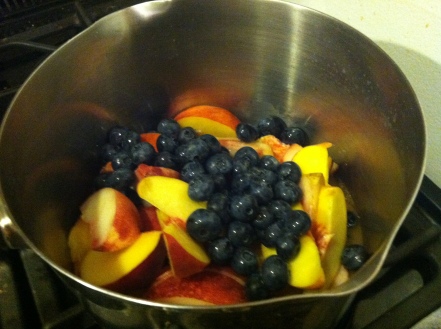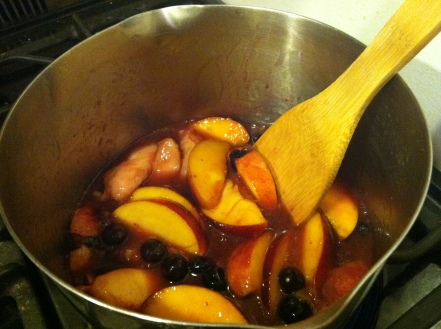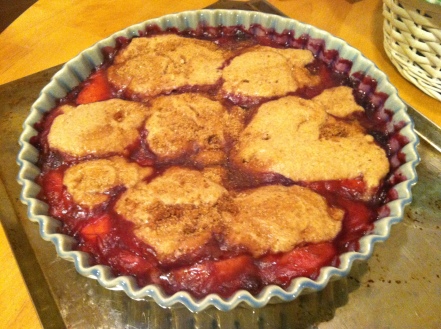I’ve been meaning to post this recipe ever since I tried it this summer, but alas I am months and months behind. I first saw this peach cobbler recipe (or peach-a-berry cobbler as she calls it) on Iowa Girl Eats. She is super fun and shares great recipes and takes awesome photos, so you should check out her blog. And definitely make this cobbler. It’s delicious.
I changed this recipe up just a little bit because I wanted to incorporate whole wheat flour and I prefer to use brown sugar over white sugar. Here’s the slightly modified version:
Ingredients:
1/2 cup whole wheat flour
1/2 cup white flour
1/2 cup brown sugar
1-1/2 teaspoons baking powder
1/2 cup milk (I prefer whole, but you can use whatever)
1/4 cup butter, softened
1/4 cup + 2 tablespoons white sugar
1 tablespoon cornstarch
1/2 cup cold water
3 cups sliced fresh peaches, skin on
1 cup fresh blueberries
1 tablespoon butter
1 tablespoon lemon juice
1/4 teaspoon cinnamon
Directions
Preheat oven to 350 degrees and then begin by making the topping. Combine both types of flour, 1/4 cup of the brown sugar, 1/4 cup white sugar and the baking powder in a large bowl and stir. Add milk and butter then stir until smooth. Set aside.
In a large saucepan mix together the other 1/4 cup of brown sugar, the cornstarch, and water until smooth. With the heat on medium, add the peaches and blueberries.
Cook until the peach and blueberry mixture is thick and bubbly. Add the 1 tablespoon of butter and the lemon juice and stir until butter is melted.
Pour fruit mixture into an ungreased pie pan and add the topping. Try not to make the dollops of topping too thick because I did that the first time and it didn’t cook all the way through. The second time I made this cobbler I made a point to make the dollops thinner and spread them out a bit and it worked much better.
Stir 2 tablespoons of white sugar and cinnamon together in a small bowl then sprinkle on top.
Because the cobbler might bubble up while baking, put the pie pan on a cookie sheet. Bake for 30-35 minutes or until a toothpick inserted into the center of the topping comes out clean. Enjoy!




















